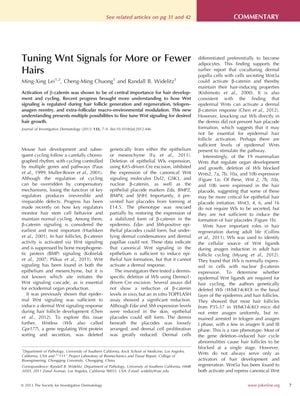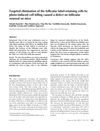Tuning Wnt Signals for More or Fewer Hairs
January 2013
in “
Journal of Investigative Dermatology
”

TLDR Changing Wnt signaling can lead to more or less hair growth and might help treat hair loss and skin conditions.
The document from 2013 discusses the critical role of Wnt signaling in hair follicle development and regeneration, highlighting the potential for manipulating this pathway to treat hair-related conditions such as alopecia. It was found that deletion of the Wntless gene impeded the expression of key Wnt proteins necessary for hair follicle initiation. Additionally, the document explores the impact of Transforming growth factor-B1 (TGFB1) on skin health, noting that TGFB1 from epidermal keratinocytes can disrupt cutaneous dendritic cell homeostasis, potentially leading to increased inflammation and contributing to conditions like psoriasis. These findings emphasize the complexity of skin and hair follicle biology and the need for further research to understand and therapeutically modulate these signaling pathways. The work is supported by US NIH grants and suggests that a deeper understanding of these mechanisms could have clinical applications for skin diseases and injury recovery.









